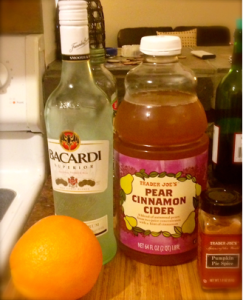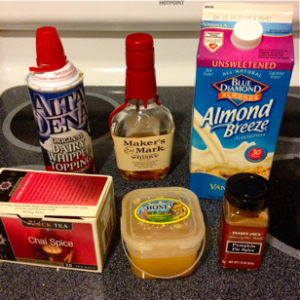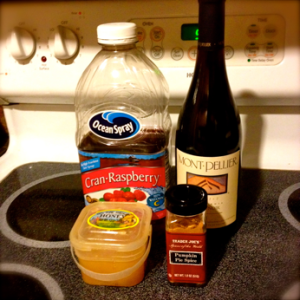Happy New Year, everyone. Please allow me to state my unpopular opinion: I consider New Year’s resolutions to be the devil. Yes, I realize that resolving to accomplish certain goals every January can really help people have a positive outlook on their futures and motivate themselves, but: 1) People very rarely have the wherewithal to stick with them (which is the most obvious drawback) and 2) New Year’s resolutions cause you to reflect upon the past year and think of all the shit you did not accomplish. As in, “Oh God, there goes another year and I didn’t change careers / put myself out there in the dating world / lose ten pounds…” You fill in the blank. Woe is you. You messed up this year, huh? But that’s okay, because next year you will do all those things! Right? Right! Except there’s a chance you might not. Because point #1.
But what if, instead of making New Year’s resolutions, we did Past Year’s reflections? I think this method is a healthier, glass-half-full approach to prepare for the next 365 days. Sure, there are some things you wish you could have done this past year, things you really hope you’ll do next year. But why not catalog all the really cool, life-changing things that you did do? It can feel like time is speeding up in all sorts of odd ways as we age, and it’s easy to lose track of the milestones as the year flies by. Reflecting upon the past twelve months reminds me how long a year actually is, and I wind up realizing that I have made progress as a human being.
Ready? Awesome, I’ll start, and I’ll start by being perfectly honest. This past year wasn’t one of my favorites. There were a lot of personal hurdles to confront family-wise, work-wise, self-wise, money-wise, pet-ownership-wise… pretty much all of the wises. But every time an obstacle cropped up, the way I ultimately chose to deal with it was with the pat on the back I gifted myself. I might not have compiled all the Facebook-friendly accolades that usually qualify as “milestones.” This year, mine were quieter and more personal but no less valuable.
Sure, there were a few big moments: I moved in with a significant other. We adopted a rescue dog and showered her with love. I left my Hollywood assistant job and launched my freelancing career, ignoring how much the prospect terrified me. I finished writing my first book. Then I rewrote it. And rewrote it again. (I’m still rewriting it again.) So, yeah, these are big, important things! But the moments in between these big, important things, when life was definitely not throwing me a Get-it-Girl parade, are the moments in which I feel I grew the most. And they’re the moments I think I’m proudest of.
I learned how to enrich my relationship with my family from afar when someone close to me confronted a health crisis. There was a lot of flying back and forth to New York for a few months, and I had to really weigh the pros and cons of my life on the opposite coast. That was scary. So was the realization that the healthy status-quo of your parents is not permanent by any means: it’s something we all know on a very basic level, but it’s different when you really start to know it. I’m not proud of how much I yo-yoed emotionally during that time. But I’m proud of and happy with my decision to stay on the West Coast. By even suggesting that I’d move back East, I was giving my family the impression that the situation we were in might be worse than it actually was. They wanted me to keep on keeping on so that we could establish a new normal. So I did. And they did, too. That was a huge thing to have learned. Life is full of establishing “New Normals” when something doesn’t go as planned.
Another “New Normal” (and yes, I’m sensing a pattern here) that I had to establish was in regard to my dog Sydney—the peanut butter to my jelly, the Hobbes to my Calvin. Sydney underwent major surgery on both her eyes and went completely blind due to glaucoma. I had to teach her how to “see” her world in a new way, and boy… it was tough. For weeks, I couldn’t even get her to walk to the front gate of our apartment complex. But every day I set a goal for the two of us to accomplish, however small, and every day, she achieved that goal with my help. Eventually, “Today, we’ll take five steps to the water bowl” turned into “Today, we’ll run up the stairs for a treat.” And I also finally paid off that enormous vet bill. We definitely have a new normal in our household, but I don’t think I’ve ever learned so much about patience as it relates to adaptability in all living things.
“Patience and Adaptability” could totally be the theme song for my recent career move as well. After several years of working different assistant jobs throughout the entertainment industry, I decided to strike out on my own and start freelancing as a writer. I prepared for it. I gave myself a financial cushion. I pulled together a portfolio that I was proud of. I forced myself to take on projects that I didn’t really think were up my alley, just to see if I could broaden my range. Yes, I was super nervous and had daily panic attacks for a month or so. And yeah, money is tight when you do this. It’s unpredictable. But like I said, patience, adaptability, and establishing a new normal have been my jam for 2013. And I’m happier. I might not be exactly where I want to be career-wise at the moment, but I’ll be damned if I’m not pleased as punch with my decision to go for it.
And what’s that they say about long-term goals? That they’re long-term, right? Patience and discipline pays off, little by little. Before you know it, a year has gone by, and that “little-by-little” has started to look like pretty awesome progress. I think pursuing long-term career goals is a lot like climbing a tree (which 8-year-old Liz was definitely the authority on). You don’t realize how high you’ve climbed ‘till you look down, and by then, it’s usually a lot easier to keep climbing than to try to make your way back to the ground. The only difference is that once you reach the top of your career-goals tree, you won’t be yelling for your dad to come out with the ladder and help you get back down before it gets dark out.
To those of you who are suffocating yourselves with New Year’s resolutions in light of all the things you think you didn’t accomplish in 2013—cut yourself some slack. Reflect upon this past year and take stock of how you changed personally. I feel great after writing this, much better than I would have in February 2014 after realizing that I hadn’t even scratched the surface of whatever my New Year’s resolution was. Even if you had a tough year and you don’t think your milestones actually look like milestones… look closer. Not all progress is heralded by 100 “likes” and a tornado of congratulatory texts.
Move ahead with each passing year, but don’t beat yourself up over goals you were unable to accomplish when life got in the way. If you did your best with the circumstances you were dealt this past year and you know it, then guess what? You just won New Year’s.




















